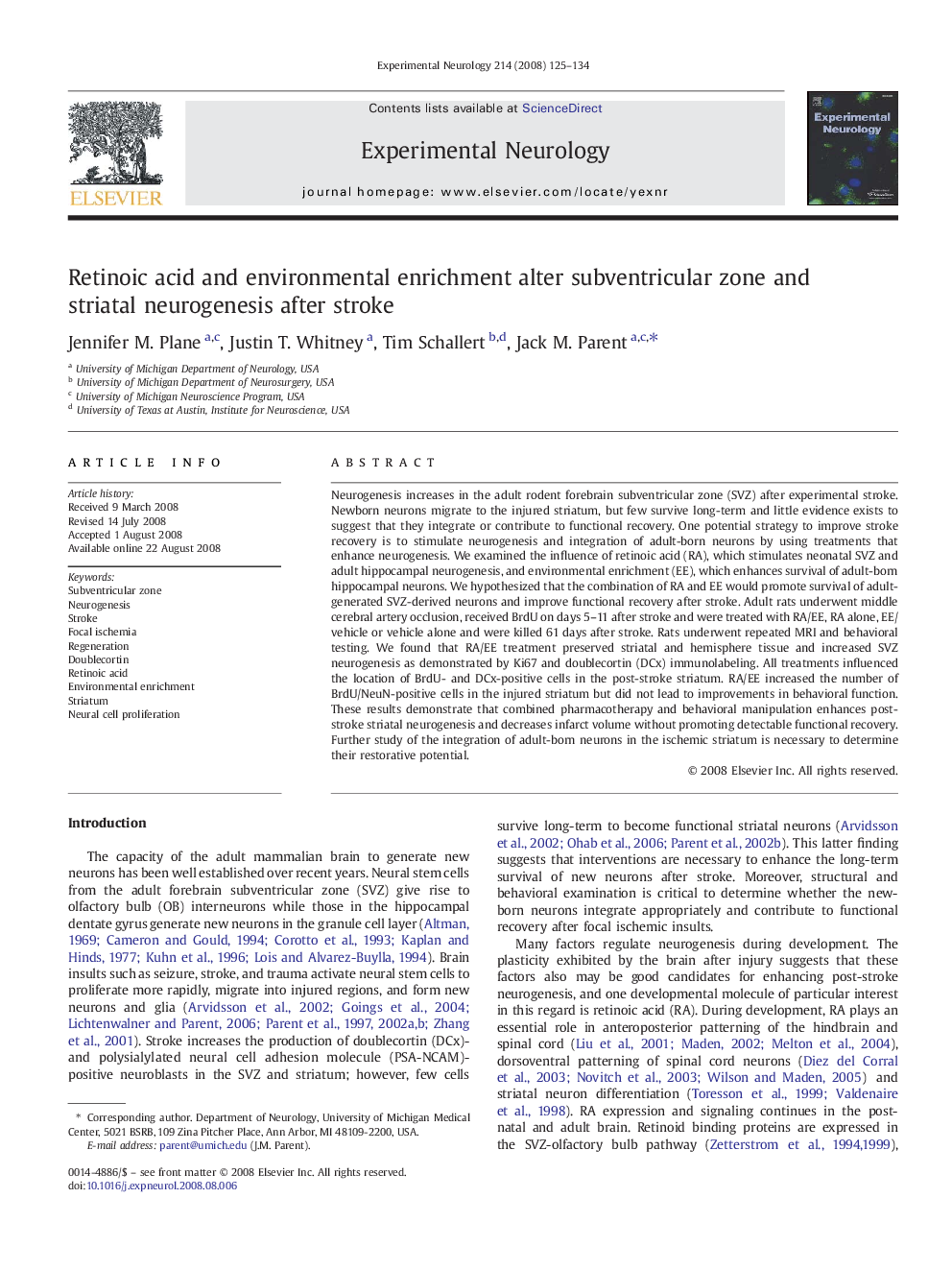| Article ID | Journal | Published Year | Pages | File Type |
|---|---|---|---|---|
| 3056701 | Experimental Neurology | 2008 | 10 Pages |
Neurogenesis increases in the adult rodent forebrain subventricular zone (SVZ) after experimental stroke. Newborn neurons migrate to the injured striatum, but few survive long-term and little evidence exists to suggest that they integrate or contribute to functional recovery. One potential strategy to improve stroke recovery is to stimulate neurogenesis and integration of adult-born neurons by using treatments that enhance neurogenesis. We examined the influence of retinoic acid (RA), which stimulates neonatal SVZ and adult hippocampal neurogenesis, and environmental enrichment (EE), which enhances survival of adult-born hippocampal neurons. We hypothesized that the combination of RA and EE would promote survival of adult-generated SVZ-derived neurons and improve functional recovery after stroke. Adult rats underwent middle cerebral artery occlusion, received BrdU on days 5–11 after stroke and were treated with RA/EE, RA alone, EE/vehicle or vehicle alone and were killed 61 days after stroke. Rats underwent repeated MRI and behavioral testing. We found that RA/EE treatment preserved striatal and hemisphere tissue and increased SVZ neurogenesis as demonstrated by Ki67 and doublecortin (DCx) immunolabeling. All treatments influenced the location of BrdU- and DCx-positive cells in the post-stroke striatum. RA/EE increased the number of BrdU/NeuN-positive cells in the injured striatum but did not lead to improvements in behavioral function. These results demonstrate that combined pharmacotherapy and behavioral manipulation enhances post-stroke striatal neurogenesis and decreases infarct volume without promoting detectable functional recovery. Further study of the integration of adult-born neurons in the ischemic striatum is necessary to determine their restorative potential.
